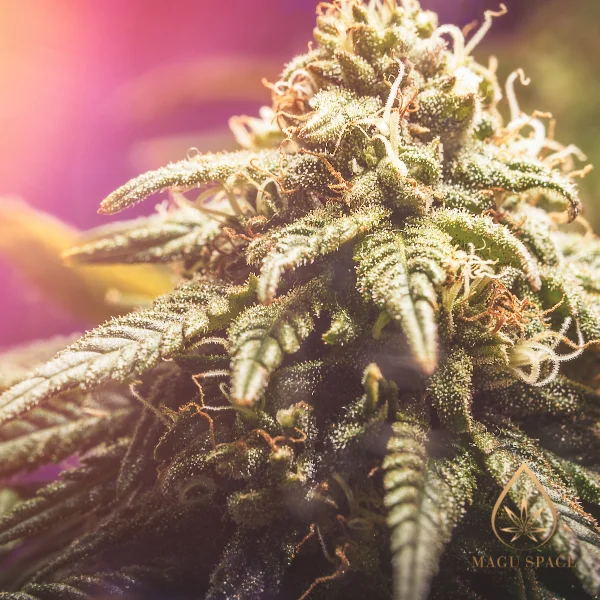You must have come across CBD hemp oil many times and noticed that it is offered in full-spectrum, broad-spectrum and not mentioned at all elsewhere. So what are they, how do they differ, and how can they be useful?
What is full spectrum CBD?
Full-spectrum CBD oil is hemp seed oil that is enriched with all the beneficial compounds found naturally in hemp. This:
- Cannabinoids. They contain more than 100 cannabinoids, including CBD (cannabidiol) and THC (tetrahydrocannabinol), which is the main psychoactive component of cannabis and is therefore legally limited to a maximum of 0.2% in a product. Meanwhile, CBD is one of the most important constituents of hemp, accounting for around 40% of the plant’s extract.
Cannabinoids fall into several classes:
- Cannabigerols (CBG)
- Cannabichromenes (CBC)
- Cannabidiol (CBD)
- Tetrahydrocannabinol (THC)
- Cannabinol (CBN)
- Cannabidiol (CBDL)
- Other cannabinoids, including cannabicyclic (CBL), cannabielsoin (CBE) and cannabithriol (CBT)
- Terpenes. They can be found in plant essential oils. They are used in perfumery, the food industry and pharmaceuticals. There are also more than 150 terpenes in hemp fibres that affect the smell of the plant (e.g. orange smells citrusy). Terpenes can also have therapeutic benefits (e.g. the scent of lavender has a calming effect).
Flavonoids
. These are natural derivatives of flavone – plant pigments. Some flavonoids, e.g. catechol, hesperetin, rutin, quercetin, chalcone derivatives, are P vitamins (they are called bioflavonoids). In tea, coffee, cocoa and winemaking, the oxidation products of flavonoids give foods their distinctive flavour, colour and aroma.
Cannabis contains about 20 different flavonoids. Flavonoids are found in all kinds of plants, including fruits, vegetables, cereals, etc. Like terpenes, they have therapeutic effects. 2016 m. Studies show that flavonoids in cannabis have anti-inflammatory, anti-cancer and neuroprotective properties. (1)
What is broad spectrum CBD?
Broad-spectrum CBD can include terpenes, flavonoids and cannabinoids, which do not include THC (tetrahydrocannabinol), which in high concentrations produces psychoactive effects.
However, broad-spectrum CBD may include an isolate CBD blend to which the manufacturer adds at least one other active substance from hemp. Therefore, the ingredients and amounts of broad-spectrum CBD depend on the manufacturer. They have a mild odour, but their beneficial effects differ from full-spectrum CBD due to environmental effects.
What is CBD isolate?
CBD isolate is the pure form of CBD without other compounds found in hemp fibres such as cannabinoids, terpenes and flavonoids. CBD isolate is a crystalline solid or powder that is dissolved in vegetable oil by the manufacturer. CBD isolate preparations do not have the full spectrum of CBD’s normal smell, taste and full effect due to environmental effects.
Main differences between full spectrum CBD, broad spectrum and isolate
The biggest difference is that full-spectrum CBD products contain a small amount of THC – up to 0.02% – while broad-spectrum and isolate products do not contain this cannabinoid.
Broad spectrum CBD is completely free of THC, but contains at least one natural constituent of hemp. These can be residual cannabinoids, terpenes or flavonoids.
CBD isolate is pure CBD without any other hemp compounds.
The environmental effect – what is it?
The advantage of full-spectrum CBD is determined by the entourage effect. This is the theory that the different compounds in cannabis act synergistically to produce a uniquely beneficial effect. Studies show that CBD alone can
be beneficial, but the „environmental effect” is enhanced when CBD is combined with terpenes and flavonoids, other cannabinoids naturally present in cannabis.
This study was first carried out and described in 1998. Raphael Mechoulam (Raphael Mashoulam), professor of organic chemistry and medicinal chemistry at the Hebrew University of Jerusalem, Israel, together with S Ben-Shabat and team. They suggested that the endocannabinoid system exhibited an „environmental effect”, whereby various „inactive” metabolites and closely related molecules significantly increased the activity of the primary endogenous cannabinoids, anadamidine and 2-acarolacholamines. This helped explain why botanical medicines were often more effective than their individual components (Mechoulam and Ben-Shabat, 1999).
All CBD oils have one integral common ingredient – cannabidiol, otherwise known as CBD – but the rest depends on the manufacturer. So keep an eye on the composition of the CBD oil, which every vendor is obliged to poison. Only there can you see what kind of product it really is, whether full spectrum, broad spectrum or isolate.
Which CBD oil do you prefer?
Sources:
- Ganora L., The Phytochemistry of Herbs. Australia University. 20. Oct.2007

